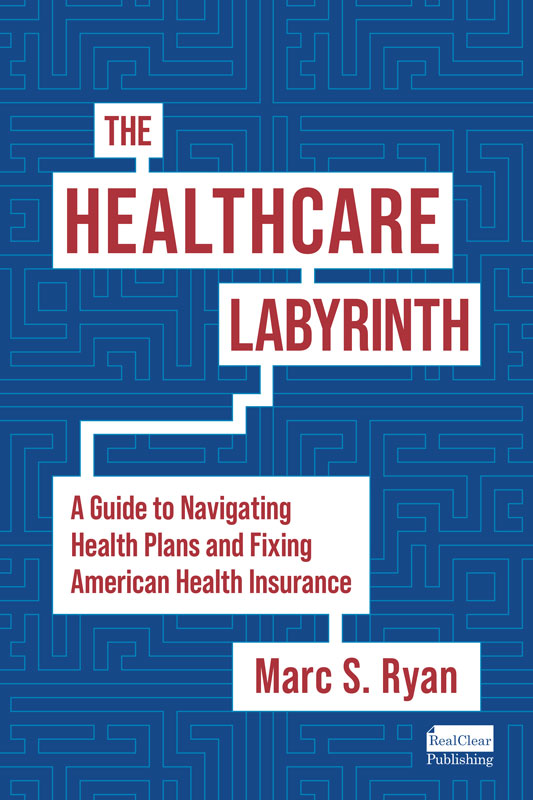Hospitals Hate Price Reform: CHA Sues State Over Price Caps
The oblivious-to-the-true-healthcare-crisis hospitals are once again trying to cripple reforms to price in the system. The California Hospital Association (CHA) has filed a lawsuit against the state’s Office of Health Care Affordability, arguing the agency’s price caps on hospitals are unlawful and will threaten critical access to patients in need. Chicken Little is back!
The arguments are old news from the hospital lobby playbook. The main goal is to continue to safeguard bloated price masters and bureaucracies at the expense of the American people.
The state agency is imposing a 3.5% statewide spending growth target for 2025, declining to 3% by 2029, as well as lower targets for existing price outlier hospitals. The CHA hides behind the fact that premiums are increasing by 10%, arguing the efforts have not worked. Yet, much of that is utilization increases as well as price hikes at hospitals and for drugs – the two big areas increasing in healthcare.
Of course, America as a whole should push for such reforms as price, driven in large measure by hospital care, is a huge outlier in America compared with other developed countries. Because federal officials refuse to take the healthcare crisis seriously, more and more states are pushing reform by establishing various caps on hospital and other costs.
As a recent Health Affairs Forefront blog argues, hospitals are about a third of all healthcare and are highly concentrated. This in and of itself leads to high price and ongoing inflation. Hospitals are increasingly buying physicians to drive practice patterns to expensive hospital or hospital-owned settings.
States are using various price caps on hospitals, including for state insurance plans, caps in the commercial market, rate-setting for various lines of business, and even global all-payer rate-setting. As the authors note, these changes have the potential to save big dollars and right-size spending. This is what the hospitals really fear.
Another Health Affairs study finds that commercial insurance prices were 78% higher in hospital outpatient settings compared with ambulatory surgical centers in 2024. This is what hospitals are protecting.
In related news, another Health Affairs Forefront article finds that four years’ worth of federal price transparency rule filings have revealed costly inefficiencies, obfuscation, and an immensely complex system of payer-provider contracts and payments. Transparency has given us at least a glimpse at how broken price is.
Additional articles: https://www.healthaffairs.org/content/forefront/states-using-hospital-price-caps-save-money and https://www.healthaffairs.org/content/forefront/transparency-reveals-health-care-prices-and-billing-and-payments-system-need-overhaul and https://www.beckerspayer.com/research-analysis/commercial-insurance-prices-78-higher-in-hopds-vs-ascs-study/
(Some articles may require a subscription)
#hospitals #rates #margins #employercoverage #transparency #pricetransparency #healthplans
Medicare Network and Provider Info Inaccurate
A Washington Post analysis finds inconsistencies in the Medicare Plan Finder (MPF) regarding provider and network information, including duplicative addresses and contradictory information regarding providers’ network status. The Centers for Medicare and Medicaid Services says it is seeking to resolve the issues. Separately, a new federal rule would further ensure the accuracy of Medicare Advantage (MA) plan provider directories and clear the way for easy submission to the MPF. Investments will be made in the MPF and a new special election period will allow beneficiaries to leave their current plan if incorrect information is present in the new directory.
Separately, healthcare policy group KFF has published a nice guide on the Medicare open enrollment period and what consumers need to know.
Additional article: https://www.kff.org/medicare/what-to-know-about-the-medicare-open-enrollment-period-and-medicare-coverage-options/
#medicare #medicareadvantage #cms #providers
Medicaid Spending Inequities
A good Health Affairs Forefront blog pointing out the inequitable Medicaid match system and the growing inequities between states in terms of spending and size of their Medicaid programs. As the blog notes, there are no limits to states’ ability to claim generous federal matching funds and the richest states have more money to put up to leverage federal dollars. It says the concentration of Medicaid funds on the wealthiest states has accelerated. It finds that the federal government provided $2.47 for every $1 that Arkansas spent on most beneficiaries, but only $1 for every $1 that Massachusetts spent. Yet, the federal government distributed more Medicaid funding per poor resident to Massachusetts ($17,733) than to Arkansas ($14,039) due to how matching rate laws incentive wealthy states to spend more than poor ones. The wealthy states tend to spend more on richer benefits and expansion groups. The One Big Beautiful Bill does not really change this reality.
The situation has led many conservatives to seek to reform matching grants to stop the explosive growth in wealthier, safety-net-rich states. I have argued that matching funding should be limited to a reasonable set of populations and benefits – with rich states reining in their generosity and poorer ones moving up.
Related coverage in a healthcare policy group KFF briefer that looks at the variation in Medicaid spending by group and across states. Medicaid spending per enrollee ranges from under $5,000 to over $12,000 in states. Similar patterns occur between eligibility groups.
Additional article: https://www.kff.org/medicaid/a-look-at-variation-in-medicaid-spending-per-enrollee-by-group-and-across-states/
(Some articles may require a subscription.)
#medicaid #states #spending
— Marc S. Ryan





